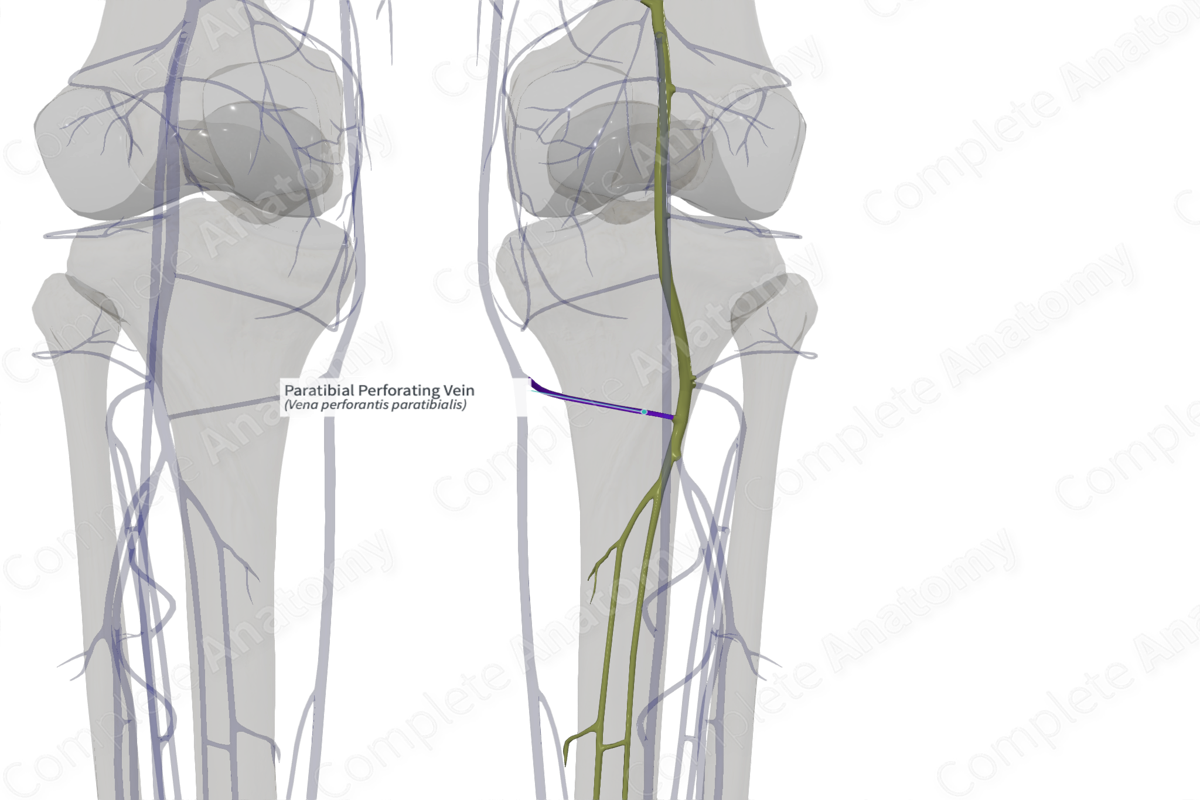
Quick Facts
Origin: Great saphenous vein.
Course: Found below the knee joint.
Tributaries: None.
Drainage: Unites with the posterior tibial veins.
Related parts of the anatomy
Origin
The paratibial perforating vein, or Boyd’s perforating vein, is a constant vein found below the knee joint.
Course
The paratibial vein passes from the great saphenous vein to the posterior tibial veins. Other paratibial veins may be found more distally in the leg (Caggiati et al, 2014).
Structures Drained
The paratibial perforating vein connects the superficial venous system of the lower limb with the deep venous system. The perforating veins shunt blood in one direction, from superficial veins to the high-pressured deep veins. The perforating veins contain valves to prevent the flow of blood from deep to superficial.
References
Caggiati, A., Mendoza, E., Murena-Schmidt, R. & Lattimer, C. R. (2014) Anatomy of the Superficial Veins, in Mendoza, E., Lattimer, C. R. & Morrison, N. (eds), Duplex Ultrasound of Superficial Leg Veins. Berlin, Heidelberg: Springer Berlin Heidelberg, 19-47.
Learn more about this topic from other Elsevier products
Vein

A venous sinus is a vein with a thin wall of endothelium that is devoid of smooth muscle to regulate its diameter.




